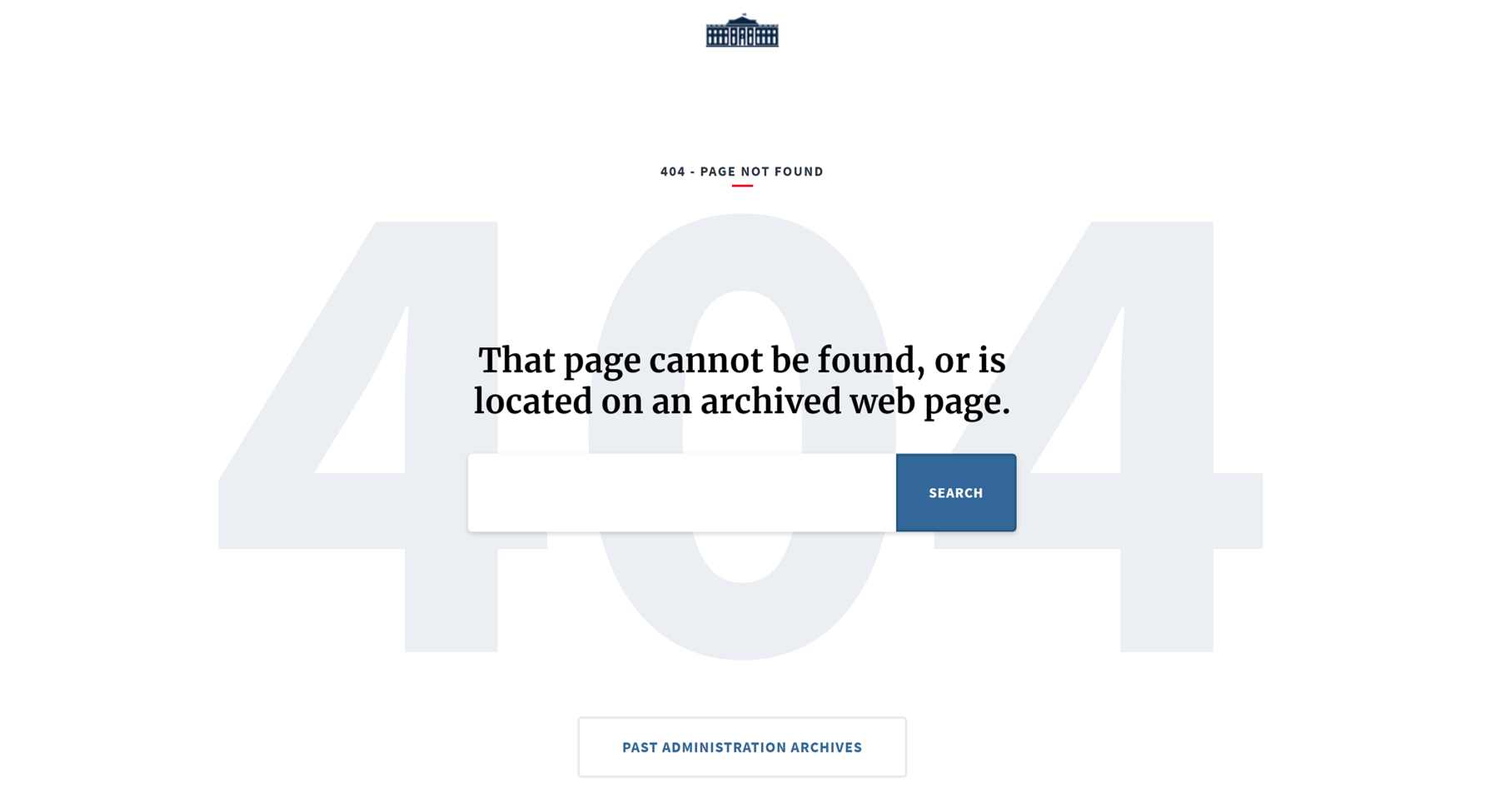White House takes down archive of daily newsletter from website without notice
 The White House late last year eliminated an archive of its widely read newsletter, 1600 Daily, that had been previously hosted on its website. 1600 Daily content is now only featured on a single page that changes roughly once every weekday, with no way to access previous editions and no apparent public archive on any .gov website. The daily postings offer summaries of news from the administration’s perspective, along with links to third party reporting.
The White House late last year eliminated an archive of its widely read newsletter, 1600 Daily, that had been previously hosted on its website. 1600 Daily content is now only featured on a single page that changes roughly once every weekday, with no way to access previous editions and no apparent public archive on any .gov website. The daily postings offer summaries of news from the administration’s perspective, along with links to third party reporting.
The Web Integrity Project’s most recent report, published today, documents the archive’s removal. Old editions of the daily newsletters, which are preserved by the Internet Archive’s Wayback Machine, were previously each hosted at their own URL within the archive. The past posts are now unavailable, and their former URLs return 404 errors, indicating that the URLs no longer direct to live content.
The 1600 Daily newsletter, which the Trump administration launched in March, 2017, attacking the Affordable Care Act in its inaugural release, continues to be sent to subscribers via email. Each day’s edition is also posted online at www.whitehouse.gov/1600daily/, as it was prior to the removal of the archive. The newsletter features everything from holiday messages to promotional language about the administration’s political objectives. Recent editions touted “another big promise kept” on trade, positive information about the economy, and new funding for anti-drug programs.
The quiet removal of the archive came as part of a broader redesign of the White House website in December, 2017, during which the design of the page hosting the 1600 Daily newsletter was also updated, increasing emphasis on images and graphics. The Trump Administration has not announced the archive’s elimination, as the new report notes.
Last year, the newsletter was the subject of a spate of media reports when it cited a satirical Washington Post article as an example of praise for its then-newly released budget. In writer Alexandra Petri’s mocking description, the spending plan was designed to figuratively “punch the impoverished in the face,” and declared anyone who opposed it to be “wimps.” The original version of the newsletter that was posted online was edited to remove the reference to the article by that evening, when both the 1600 Daily homepage and the previously available archive of that day’s newsletter were updated.
An analysis of the newsletters’ content by American University professor Joseph Graf, published last month, said it frequently contained promotional material drawn from conservative media. “Between a third and a half of all media references in the White House newsletter” came from such sources, Graf writes, citing the Washington Times, National Review and Breitbart as examples. The newsletter also frequently sourced material from small and local publications, Graf noted.
While the Obama administration had its own newsletter, it didn’t serve primarily as a vehicle for distributing good press, according to Graf. “Occasionally, its newsletter linked to op-ed pieces from administration officials, but generally Obama’s email updates were not designed to trumpet coverage that made the administration look good,” Graf writes. The nearly 600 Trump administration newsletters he analyzed, in contrast, have “included hundreds of references to positive news stories.”
As WIP has explained before, the government’s failure to proactively communicate about a removal of information sows confusion, leaving the public to question if the takedown was inadvertent or, if it was intentional, why it may have occurred. The archive’s disappearance coincided with a major overhaul of www.whitehouse.gov, which may indicate that the removal was due to technical missteps, as has been reported for removals from other agency websites.
An inadvertent removal would imply that the overhaul itself was done in a hasty or unsystematic manner, such that a key public-facing archive was not accounted for. The archive’s elimination has also remained unaddressed for more than eight months since the redesign occurred. If the removal was accidental, then, the staff leading the overhaul either failed to run the appropriate comprehensive assessment of the new website afterward, simply never noticing the removal, or realized what had happened and failed to notify the public and restore the archive.
Lindsay Walters, White House Deputy Press Secretary, responded to WIP’s requests for comment on the archive removal, whether or not it was intentional, and if proper process was followed in removing the content by dismissing the inquiry as an “absurd request.” “1600 Daily is an email newsletter, meant to be read in the Inbox,” Walters continued, despite the fact that links to the Web version of the newsletter are regularly tweeted out from the @WhiteHouse account. “It is optimized for mobile devices and for viewing across email service providers,” Walters insisted.
If the removal was intentional, as the White House’s statement seems to suggest, there is an expectation that the White House should have informed the public. As WIP has often noted, under the Paperwork Reduction Act and the White House’s own Office of Management and Budget guidance, the government is required to “provide adequate notice when initiating, substantially modifying, or terminating significant information dissemination products.” Without communicating clearly with the public, we’re left to guess exactly what the takedown means, if the removed content was targeted to achieve some undisclosed end, and which of its responsibilities the White House may have shirked.

